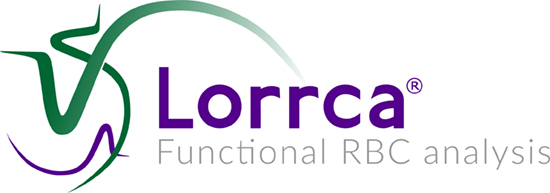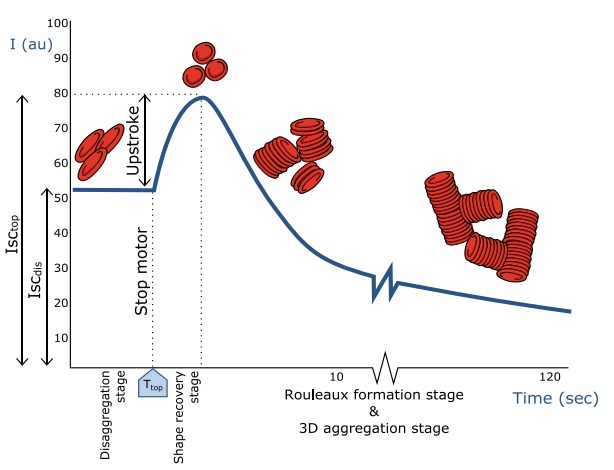Aggregation and Dis-aggregation
RBC aggregation is an important, shear dependent, determinant of blood viscosity. Hyperaggregability can be detected in various diseases (e.g inflammatory states, vascular pathologies and tissue perfusion problems).
Measurement Complete disaggregation of the RBC’s is induced by applying a high shear rate; followed by an abrupt stop, which causes the elongated and orientated RBC to retake their normal, biconcave, shape and orientate randomly. Then the aggregation process starts, at which rouleaux formation occurs. A syllectogram is created by plotting the laser backscattered intensity (Isc) versus time. By means of a photodiode (which measures the change in light backscatter) the total extent and kinetics of aggregation are displayed, as well as the minimal shear rate (threshold) needed to prevent RBC aggregation, i.e. the tendency for aggregation. For this test ~1 ml of whole blood is needed.

